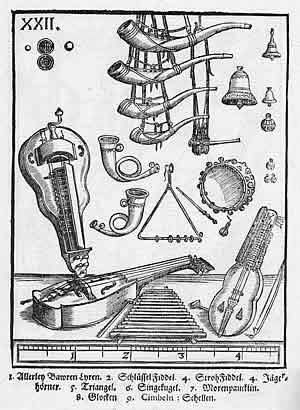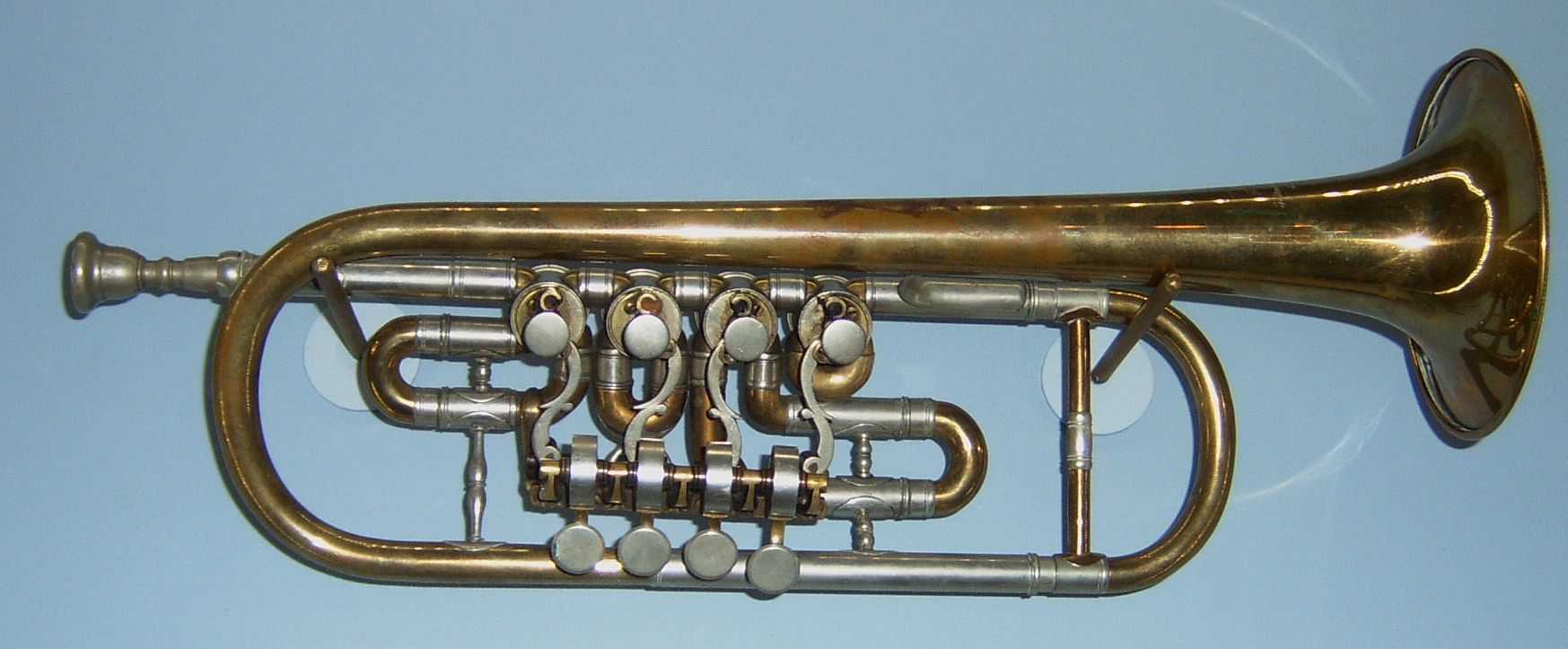|
Kaisatsuko
The kaisatsuko (Japanese: 回擦胡, literally "wheel-bowed fiddle") is a mechanical experimental musical instrument invented by Yuichi Onoue of Tokyo, Japan. The instrument consists of two strings on a fretless neck. A crank is affixed to a small nylon wheel mounted on the body. The player turns the crank, causing the wheel to spin and "bow" the strings. This concept is similar to that employed by the hurdy-gurdy. Unlike most hurdy-gurdies, Onoue's instrument has no keybox, but is fingered along the neck. This detail is similar to the dulcigurdy, a hurdy-gurdy variant recorded by Michael Praetorius. Besides the Kaisatsuko Onoue also developed a 24-TET quarter tone A quarter tone is a pitch halfway between the usual notes of a chromatic scale or an interval about half as wide (aurally, or logarithmically) as a semitone, which itself is half a whole tone. Quarter tones divide the octave by 50 cents each, ... tuning on his guitar as well as a deeply scalloped electric g ... [...More Info...] [...Related Items...] OR: [Wikipedia] [Google] [Baidu] |
Experimental Musical Instrument
An experimental musical instrument (or custom-made instrument) is a musical instrument that modifies or extends an existing instrument or class of instruments, or defines or creates a new class of instrument. Some are created through simple modifications, such as cracked drum cymbals or metal objects inserted between piano strings in a prepared piano. Some experimental instruments are created from household items like a homemade mute for brass instruments such as bathtub plugs. Other experimental instruments are created from electronic spare parts, or by mixing acoustic instruments with electric components. The instruments created by the earliest 20th-century builders of experimental musical instruments, such as Luigi Russolo (1885–1947), Harry Partch (1901–1974), and John Cage (1912–1992), were not well received by the public at the time of their invention. Even mid-20th century builders such as Ivor Darreg, Pierre Schaeffer and Pierre Henry did not gain a great deal ... [...More Info...] [...Related Items...] OR: [Wikipedia] [Google] [Baidu] |
Hurdy-gurdy
The hurdy-gurdy is a string instrument that produces sound by a hand-crank-turned, rosined wheel rubbing against the strings. The wheel functions much like a violin bow, and single notes played on the instrument sound similar to those of a violin. Melodies are played on a keyboard that presses ''tangents''—small wedges, typically made of wood—against one or more of the strings to change their pitch. Like most other acoustic stringed instruments, it has a sound board and hollow cavity to make the vibration of the strings audible. Most hurdy-gurdies have multiple drone strings, which give a constant pitch accompaniment to the melody, resulting in a sound similar to that of bagpipes. For this reason, the hurdy-gurdy is often used interchangeably or along with bagpipes. It is mostly used in Occitan, Aragonese, Cajun French, Asturian, Cantabrian, Galician, Hungarian, and Slavic folk music. One or more of the drone strings usually passes over a loose bridge that can be ... [...More Info...] [...Related Items...] OR: [Wikipedia] [Google] [Baidu] |
Hurdy-gurdies
The hurdy-gurdy is a string instrument that produces sound by a hand-crank-turned, rosined wheel rubbing against the strings. The wheel functions much like a violin bow, and single notes played on the instrument sound similar to those of a violin. Melodies are played on a keyboard that presses ''tangents''—small wedges, typically made of wood—against one or more of the strings to change their pitch. Like most other acoustic stringed instruments, it has a sound board and hollow cavity to make the vibration of the strings audible. Most hurdy-gurdies have multiple drone strings, which give a constant pitch accompaniment to the melody, resulting in a sound similar to that of bagpipes. For this reason, the hurdy-gurdy is often used interchangeably or along with bagpipes. It is mostly used in Occitan, Aragonese, Cajun French, Asturian, Cantabrian, Galician, Hungarian, and Slavic folk music. One or more of the drone strings usually passes over a loose bridge that can be mad ... [...More Info...] [...Related Items...] OR: [Wikipedia] [Google] [Baidu] |
Yuichi Onoue
Yūichi, Yuichi, or Yuuichi is a masculine Japanese given name. Possible writings Yūichi can be written using different combinations of kanji characters. Here are some examples: *勇一, "courage, 1" *祐一, "to help, 1" *祐市, "to help, city" *佑一, "to help, 1" *佑市, "to help, city" *裕一, "abundant, 1" *裕市, "abundant, city" *雄一, "male, 1" *友一, "friend, 1" *悠一, "long time, 1" *悠市, "long time, city" *優一, "superiority, 1" *有一, "to have, 1" *邑一, "village, 1" The name can also be written in hiragana ゆういち or katakana ユウイチ. Yuichi is a separate given name. *諭一, "to persuade, 1" *愉一, "pleased, 1" *愈一, "more and more, 1" And can also be written in hiragana ゆいち or katakana ユイチ. Notable people with the name *, Japanese short track speed skater *Yuichi Fukunaga (福永 祐一, born 1976), Japanese jockey *, Japanese footballer *, Japanese baseball player *, Japanese video director *, Japanese tennis pl ... [...More Info...] [...Related Items...] OR: [Wikipedia] [Google] [Baidu] |
Michael Praetorius
Michael Praetorius (probably 28 September 1571 – 15 February 1621) was a German composer, organist, and music theorist. He was one of the most versatile composers of his age, being particularly significant in the development of musical forms based on Protestant hymns. Life Praetorius was born Michael Schultze, the youngest son of a Lutheran pastor, in Creuzburg, in present-day Thuringia. After attending school in Torgau and Zerbst, he studied divinity and philosophy at the University of Frankfurt (Oder). He was fluent in a number of languages. After receiving his musical education, from 1587 he served as organist at the Marienkirche in Frankfurt. From 1592/3 he served at the court in Wolfenbüttel, under the employ of Henry Julius, Duke of Brunswick-Lüneburg. He served in the duke's State Orchestra, first as organist and later (from 1604) as '' Kapellmeister'' (court music director). [...More Info...] [...Related Items...] OR: [Wikipedia] [Google] [Baidu] |
Quarter Tone
A quarter tone is a pitch halfway between the usual notes of a chromatic scale or an interval about half as wide (aurally, or logarithmically) as a semitone, which itself is half a whole tone. Quarter tones divide the octave by 50 cents each, and have 24 different pitches. Quarter tone has its roots in the music of the Middle East and more specifically in Persian traditional music. However, the first evidenced proposal of quarter tones, or the quarter-tone scale (24 equal temperament), was made by 19th-century music theorists Heinrich Richter in 1823 Julian Rushton, "Quarter-Tone", ''The New Grove Dictionary of Music and Musicians'', second edition, edited by Stanley Sadie and John Tyrrell (London: Macmillan, 2001). and Mikhail Mishaqa about 1840. Composers who have written music using this scale include: Pierre Boulez, Julián Carrillo, Mildred Couper, George Enescu, Alberto Ginastera, Gérard Grisey, Alois Hába, Ljubica Marić, Charles Ives, Tristan Murail, Krzys ... [...More Info...] [...Related Items...] OR: [Wikipedia] [Google] [Baidu] |
Experimental String Instruments
An experiment is a procedure carried out to support or refute a hypothesis, or determine the efficacy or likelihood of something previously untried. Experiments provide insight into cause-and-effect by demonstrating what outcome occurs when a particular factor is manipulated. Experiments vary greatly in goal and scale but always rely on repeatable procedure and logical analysis of the results. There also exist natural experimental studies. A child may carry out basic experiments to understand how things fall to the ground, while teams of scientists may take years of systematic investigation to advance their understanding of a phenomenon. Experiments and other types of hands-on activities are very important to student learning in the science classroom. Experiments can raise test scores and help a student become more engaged and interested in the material they are learning, especially when used over time. Experiments can vary from personal and informal natural comparisons ( ... [...More Info...] [...Related Items...] OR: [Wikipedia] [Google] [Baidu] |



